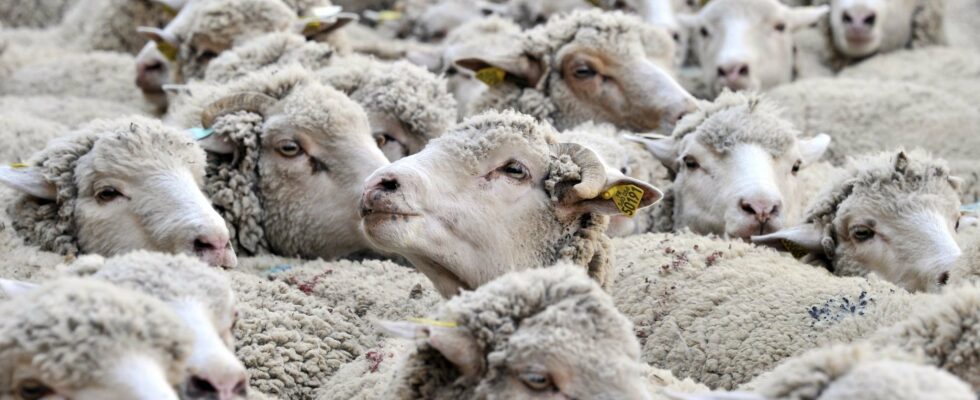“An explosion of cases”. The number of outbreaks of bluetongue (BT), which mainly affects sheep and ewes, has more than quadrupled in France in eight days. In the northern departments of the country, it is now the new serotype 3 of the BTV virus that is circulating among livestock, with 190 outbreaks confirmed as of August 22. According to the Ministry of Agriculture, the territories affected by this serotype remain for the moment contained “near the first outbreaks in an area that is not expanding much”. But serotype 8 of the virus has already been raging in the south of France for several years, placing the national livestock, made up of around 6 million sheep, under threat of a viral stranglehold.
Ten departments in the north of France are now affected by serotype 3: Aisne, Ardennes, Haute-Marne, Marne, Meurthe-et-Moselle, Meuse, Moselle, Nord, Oise and Pas-de-Calais. A previous report indicated 41 outbreaks in six departments. The spread of bluetongue, also known as “blue tongue disease”, is accelerating throughout Europe: the Netherlands and Germany had several thousand outbreaks in mid-August, and Belgium several hundred.
Bluetongue is characterized by fever, respiratory problems, a hanging tongue, loss of pregnant young and sometimes death of the animals. Its detection does not lead to the slaughter of the animals, unlike avian flu. It also affects cattle, but with very low mortality.
Vaccination too slow for breeders
Vaccination against the disease, which is not transmissible to humans, has begun, but too late according to the National Sheep Federation (FNO). According to Emmanuel Fontaine, in charge of health affairs at the FNO, “we are indeed in an explosion phase. We could have vaccinated a month earlier to have acquired immunity at the peak of the epidemic”. According to the specialist, “now, we should expand the vaccination zone and order around 2 million additional doses” for sheep, he estimates, while the State has currently planned to distribute 1.1 million doses for sheep and 5.3 million for cattle, targeting the regions most at risk, north of the Loire, where animal movements are subject to restrictions.
The Ministry of Agriculture notes that there were “slowdowns” among transporters due to the weekend of August 15, but emphasizes that “orders were launched as soon as the vaccines were authorized by Anses (health agency)” on July 5. “We compressed the deadlines as much as possible, the vaccination campaign began before the arrival of the first cases […] and France is the only country to fully cover the vaccination”, for a cost estimated to date at “7.5 million euros”, the ministry added. Faced with the acceleration of the spread, the government claims to be “listening to breeders” and monitoring the “dynamics of the disease” before considering whether or not to order new vaccines.
France caught between two serotypes
First detected in Europe in September 2023, in the Netherlands, the new serotype 3 of bluetongue has since spread to neighboring countries. It arrived in France at the beginning of August, as well as in Luxembourg and Denmark. But a bluetongue epizootic has already been present in the south of the country for several years, relating to a different serotype, type 8. Vaccines exist for this one and are already distributed. They were taken care of by the state “between 2008 and 2018”, the year from which the disease was considered endemic in France.
On Thursday, August 22, breeders gathered in Foix (Ariège) to demand aid after the estimated death, since June, of 4,000 sheep in Occitanie. “This year, we are facing a new variant of serotype 8, more virulent and which is progressing. Before, the Culicoides midge, the vector insect, did not evolve beyond 800 meters of altitude, now, we have affected farms at 1,000 meters”, explains Emmanuel Fontaine. “This is why breeders are asking for state aid. Between the FCO 8 which is rising and the FCO 3 which is falling, breeders in the center, where the large herds are concentrated, are caught in a vice”, he warns, worried about the future of the French livestock.
